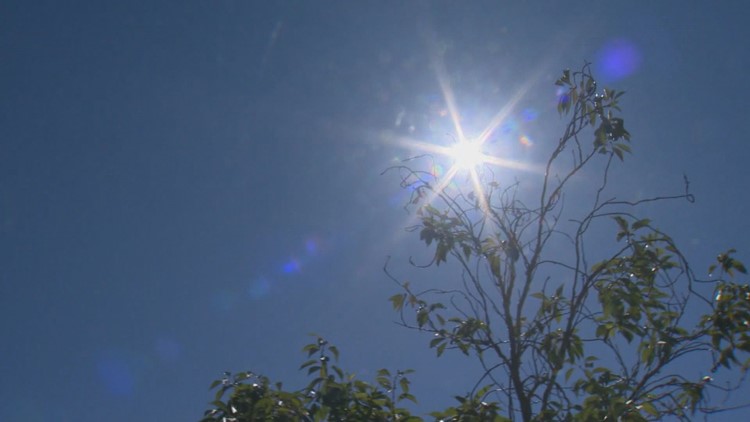PORTLAND, Ore. — The Oregon Office of Emergency Management (OEM) held a press conference with Oregon Health Authority (OHA) and Oregon Department of Human Services to discuss the excessive heat in the forecast this weekend and what Oregonians can do to stay safe.
The messaging from the agencies culminated in an ask for all Oregonians to check on their friends and loved ones and prepare as best they can.
"We want folks to be getting messages from multiple different places and it will take all of us to get the word out there so that people know they have access to that information," said OHA director Rachael Banks. "Ideally folks are being contacted by family and friends, on the radio, on the news and hearing it in languages they speak, which is why we have multiple different channels to get that information out.
An Excessive Heat Watch has been issued for Thursday-Saturday for parts of Southern Washington and Southwest Oregon. Some areas near Portland and Salem could reach near 100 degrees on Friday and areas east of the Cascades could climb as high as 105.
Banks urged anyone who needs medical attention to seek it out. However, she said OHA wants to do everything possible to avoid the need for emergency room visits as COVID hospitalizations see an uptick in the state.
She encouraged Oregonians to look out for symptoms of heat exhaustion in themselves and others.
OHA, via Banks, also said it understood the need to get services to the most vulnerable of Oregonians but gave no specific means of doing so.
"No one should suffer heat exhaustion or heat stroke because they are alone and don’t have air conditioning or can’t get to a cooling center," she said, adding that no one should suffer while working in the extreme heat either. She recommends drinking more water, avoiding being outside during the hottest part of the day, not relying on a fan as a primary cooling tool, and wearing loose-fitting, light-colored closing.
The press conference comes about a month after the historic June heat wave that was responsible for at least 83 confirmed deaths, with 33 still being investigated across the state, it was confirmed that roughly 10% of those deaths were people of color.
Portland set new heat records on three consecutive days, peaking at 116 degrees on June 28.
Immediately following the June heat wave, 211info, the private nonprofit responsible for providing information about cooling centers and other social services, received criticism because its phone line was not properly working and no staff members worked during the weekend. In the aftermath, the nonprofit announced 211 services would be available 24/7 statewide and in four counties across Southwest Washington.
Fariborz Pakseresht, Director of the Oregon Department of Human Services assured reporters in a press conference that the 211info line would be staffed 24/7 throughout the rest of the summer and for as long as wildfires were posing a threat in the state.
The state agencies all said that the unprecedented nature of a heat event to that extreme made it a difficult task to tackle. With an understanding of the severity of it and how it impacted Oregonians, the agencies feel better prepared. There is no systemic alert system to reach the most vulnerable Oregonians, the agencies are leaning on the public, media, their websites and social media to spread the message.
Director of Oregon Office of Emergency Management, Andrew Phelps, said they are looking to other options to fill in these information gaps like healthcare providers and utility companies.
"I would rather people hear these messages of preparedness a dozen times rather than not hearing it at all," said Phelps.
On Wednesday, Oregon Occupational Safety and Health (OSHA) released a press release reminding employers about recently adopted emergency rules to protect workers from extreme heat. The rules require workplaces to provide shade, cool drinking water and regular breaks for employees when the heat index reaches 80 degrees or more. Employers must also look out for signs and symptoms of heat illness and have an emergency medical plan in place when the heat index rises above 90 degrees.



